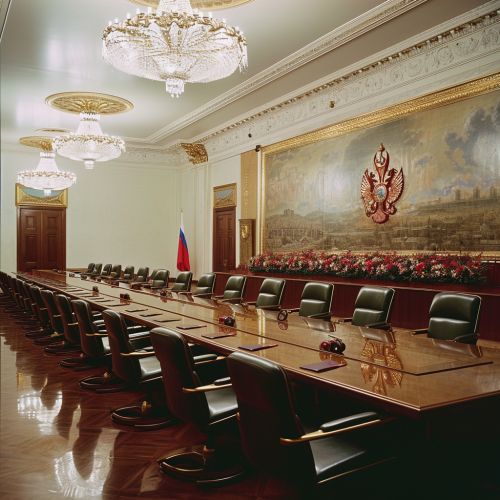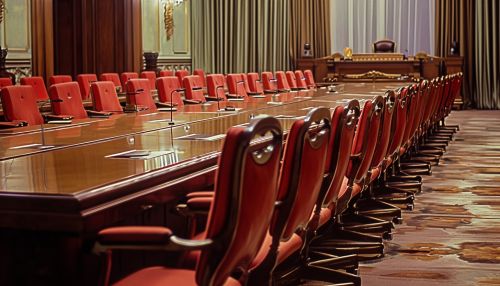Council of Ministers of the Soviet Union
Overview
The Council of Ministers of the Soviet Union was the highest executive and administrative body of the Soviet Union. It was created in 1946, replacing the People's Commissariats that had been in place since the October Revolution of 1917. The Council of Ministers was responsible for the general administration of the Soviet Union and the implementation of laws and resolutions passed by the Supreme Soviet and the Presidium.


Structure and Composition
The Council of Ministers was made up of a Chairman, several First Deputy Chairmen, Deputy Chairmen, ministers, chairmen of state committees, and chairmen of the councils of ministers of the Union Republics. The Chairman of the Council of Ministers, often referred to as the Premier, was the head of government and held the highest governmental office in the Soviet Union. This position was held by several notable figures throughout the history of the Soviet Union, including Joseph Stalin, Nikita Khrushchev, and Alexei Kosygin.
Functions and Responsibilities
The Council of Ministers was responsible for all aspects of the administrative and economic life of the Soviet Union. This included the direction and control of the national economy, the implementation of domestic and foreign policy, and the maintenance of public order. The Council also had the power to issue decrees and resolutions, which were binding throughout the Soviet Union.
Historical Context
The Council of Ministers was established in 1946 as part of a constitutional reform aimed at strengthening the role of the Soviet state and its administrative apparatus. This reform was a response to the challenges posed by the aftermath of World War II and the onset of the Cold War. The Council of Ministers remained in place until the dissolution of the Soviet Union in 1991.
Legacy
The Council of Ministers of the Soviet Union left a significant legacy in the history of the Soviet state and its administrative structures. Its role and functions were inherited by the government of the Russian Federation, which was established following the dissolution of the Soviet Union.
